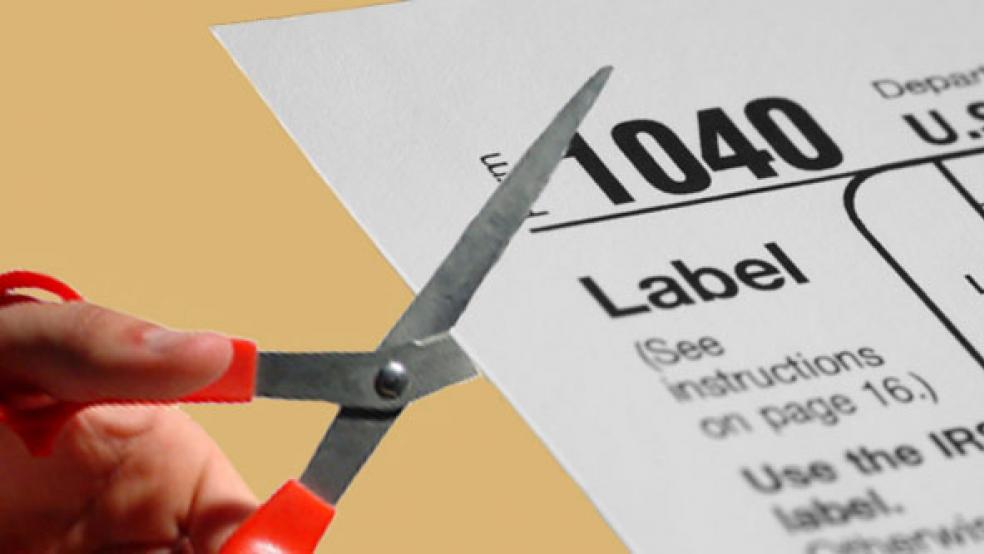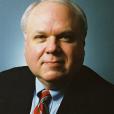A couple of weeks ago, the co-chairmen of the National Commission on Fiscal Responsibility and Reform, Alan Simpson and Erskine Bowles, released a draft report, updated this week, that contained an odd provision for a document that was supposed to be solely concerned with deficit reduction. It was a proposal to fundamentally restructure the federal income tax system by broadening the tax base and slashing tax rates. Simpson and Bowles would eliminate $1.1 trillion in so-called tax expenditures and reduce the top income tax rate from 35 percent to just 23 percent under one option.
Conservatives have been giddy ever since because there is nothing in the world that excites them more than cuts in tax rates. The flat tax has been the Holy Grail of conservative tax policy since at least the early 1980s. They even got pretty close to it in 1986, when Ronald Reagan succeeded in getting the top statutory income tax rate down to 28 percent. (His hand-picked successor, George H.W. Bush, quickly undid Reagan’s work and agreed to an increase in the top rate to 31 percent in 1990. Needless to say, the tax expenditures that were eliminated as part of the 1986 deal were not restored.)
Unfortunately, this obsession with statutory tax rates has blinded conservatives to two elements of tax policy that are substantially more important. The first is the tax base – what is taxed by the tax system. The second is the effective tax rate – the rate that actually applies once various adjustments have been made to gross income – exemptions, exclusions, deductions, credits and so on. Effective rates can vary substantially from those that nominally apply to a given income and are the ones that really matter for incentives. According to a recent study by the Tax Policy Center, even among the top one percent of taxpayers, effective income tax rates vary from 2.6 percent for those in the bottom 10 percent (of the top one percent) to 26.9 percent among the top 10 percent (of the top one percent).
thought-through issue that Congress considered in
terms of its impact on federal revenues or health policy.
It may surprise people to discover that nowhere in tax law is the basic term “income” defined. In practice, it basically means cash flow, but the Internal Revenue Service is not constrained from taxing noncash income. In many cases, it is simply historical practice and the constraints imposed by its limited resources that keep it from taxing many types of income. The most obvious is the exclusion for employer-provided health insurance. It’s obviously a form of employee compensation, but is completely tax free. Employers deduct the cost as a business expense, just as they deduct cash wages, but although workers pay taxes on cash wages they are required neither to report nor pay taxes on their health benefits.
Interestingly, the exclusion for health insurance wasn’t a carefully thought-through issue that Congress considered in terms of its impact on federal revenues or health policy. It came into existence in 1943 because wage and price controls prevented employers from increasing cash wages to attract workers at a time when there was a significant labor shortage. They began offering noncash benefits as part of their compensation and the IRS – no doubt to its everlasting regret – decided that health benefits were not taxable to employees as an administrative measure.
In other cases, court decisions have limited the government’s ability to tax certain forms of income. Probably the best example is unrealized capital gains, which the Supreme Court ruled to be nontaxable in a 1920 decision. Only realized gains may be taxed, it said, thus giving investors sole discretion on how and when to recognize that particular form of income.
Tax theorists don’t even agree exactly what income is. The dominant definition is one that is far broader than that which applies in practice. It was developed by two economists, Robert M. Haig and Henry Simons, who defined it as consumption during the course of a calendar year plus the change in net worth. Thus unrealized capital gains would be taxed annually, as well as many other forms of currently untaxed income. Theoretically, this would include not only things like health benefits, but even the imputed rent that homeowners pay to themselves by virtue of being both landlord and tenant in their own house. In 2009, imputed rent added more than $1 trillion to personal income according to the Commerce Department.
for the calculation of effective tax rates, incentive and fairness.
Many economists have long objected to the overly broad definition of income proposed by Haig and Simons, as well as the adverse economic consequences if it were applied in practice. The great economist Irving Fisher argued strenuously that consumption alone is the most appropriate tax base, and almost all economists agree that the full taxation of saving and investment would be a bad idea because it would reduce economic growth.
Obviously, how one defines income will have enormous consequences for the calculation of effective tax rates, incentives and fairness. If one accepts the Haig-Simons definition of income, effective tax rates on the wealthy are very much lower than they appear to be because a huge amount of income, unrealized capital gains, are excluded from the calculation. This is important because the wealthier one is the more likely that capital gains will represent a large portion of one’s income.
On the other hand, if one believes that consumption is the only thing that should be taxed, then any taxation of capital gains, whether realized or unrealized, represents a double tax. This would make effective tax rates on those that save a great deal very considerably higher than they should be.
Just imagine two brothers with the same salary. The first not only spends every penny he makes, but borrows as much as he can to live beyond his means. The second is frugal and saves a large portion of his income. Not only does he pay the same income tax as his spendthrift brother, but he may also be forced to pay additional taxes on the dividends or interest he earns on his savings.
Unfortunately, when the Treasury Department first began calculating tax expenditures – provisions of the tax law that are similar in impact to direct spending – it implicitly adopted the Haig-Simons approach to defining income. Thus things like Individual Retirement Accounts, 401(k) plans and the nontaxation of capital gains are included on the list. Consequently, true tax loopholes – tax breaks with no rational justification other than the power of a special interest to feather its own nest – and exemptions and deductions that would be necessary if consumption, rather than Haig-Simons, was viewed as the appropriate tax base, are lumped together.
on his gains the total effective tax rate would rise
to more than 53 percent just at the federal level.
This is where Simpson and Bowles are seriously on the wrong track. By proposing the abolition of all tax expenditures, they would in effect establish Haig-Simons as the de facto definition of income for tax purposes. This would be an extraordinarily radical change in tax policy that would sharply raise the effective tax rate on saving and investment by taxing certain types of income two or three times.
Consider dividend income. It first arises because corporations make profits that are taxed by the corporate income tax. But when those profits are paid to its owners, the shareholders, they are taxed a second time, in contrast to the taxation of income earned by partnerships or sole proprietorships where business income is taxed only once. Thus the effective tax rate on corporate profits could be as high as 44.75 percent because they could be taxed as much as 35 percent at the corporate level and those that are paid out to shareholders as dividends are taxed another 15 percent under this year’s tax law.
The effective rate could be even higher if the prospect of higher dividends caused the shares of a corporation’s stock to rise in price. Since the stock price rises only because of the higher dividends, which are already taxed twice, then the capital gains tax would in effect be a third layer of taxation on the original dollar of profit earned by a corporation. So if a shareholder sells his stock and pays 15 percent tax on his gains the total effective tax rate would rise to more than 53 percent just at the federal level. (Tax rates on dividends and capital gains will rise sharply next year unless the law is changed.)
While Simpson and Bowles would reduce statutory tax rates, they would simultaneously introduce higher effective tax rates on saving and investment by eliminating provisions such as IRAs that currently shelter saving and investment from double and triple taxation to some extent. Keep in mind that even stock held in an IRA still bears the burden of the corporate income tax and the market prices of stock are lower because of taxes on dividends and capital gains not held in tax sheltered accounts.
In my opinion, the tax base is far more important, economically, than the statutory tax rate because that primarily determines the effective tax rate on particular forms of income and returns to saving and investment. Conservatives should be striving to achieve a consumption-based tax system and resist adoption of a Haig-Simons tax base at all cost. But their preoccupation with reducing statutory tax rates without regard to the overall impact on effective rates has caused them to endorse a tax reform that would on balance substantially raise the tax rate on capital, reduce saving and investment, and hence economic growth.


